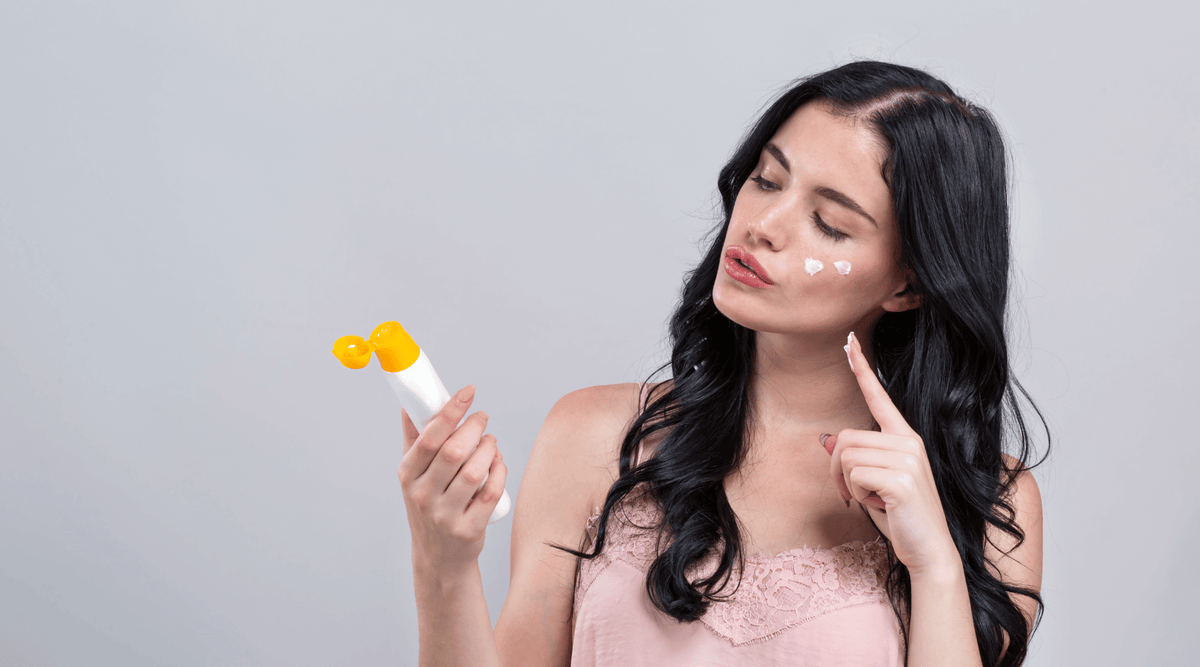

Welcome to our guide on how to prevent sunscreen pilling. Whether you're a skin care enthusiast or just starting your skin care routine, we've got you covered with tips and tricks to keep your sunscreen smooth and effective. Let's dive in!
Esthetician Approved Skin Care
Written by a licensed esthetician with 17 years experience and a passion for skin care.
We believe in healthy skin care and non-toxic ingredients.
What is Sunscreen Pilling?
Sunscreen pilling refers to the formation of small balls or flakes on the skin's surface when applying sunscreen. It occurs due to factors like incompatible products or inadequate absorption. While not harmful, it can affect sunscreen effectiveness and appearance.
Tips to Prevent Sunscreen Pilling
-
Start with Clean, Dry Skin: Before applying sunscreen, ensure your skin is clean and dry. Residual oils, sweat, or skin care products can contribute to pilling, so start with a fresh canvas.
- Allow Products to Absorb: Give your skin care products, particularly moisturizers and serums, ample time to absorb into the skin before applying sunscreen. This helps prevent product buildup and promotes better adherence.
-
Apply Sunscreen in Thin Layers: Less is more when it comes to sunscreen application. Instead of slathering on a thick layer, opt for thin, even coats. This reduces the likelihood of product clumping and encourages smoother application.
- Avoid Rubbing or Over-Applying: Vigorous rubbing or over-application of sunscreen can disturb the product's integrity and lead to pilling. Gently pat or press sunscreen into the skin using light, upward motions for optimal absorption.

- Choose Compatible Products: Be mindful of product compatibility when layering skin care products. Certain ingredients, such as silicones or oils, may interact with sunscreen formulations and increase the risk of pilling. Opt for water-based or lightweight products that play well with sunscreen.
🤩
Do you want product recommendations?
This skin care quiz can help make your glow up a success!
-
Consider Primer or Setting Spray: For added insurance against pilling, consider using a makeup primer or setting spray designed to improve product adherence. These products create a smooth canvas and help lock sunscreen in place throughout the day.
- Layer Products Properly: Apply your skincare products from thinnest to thickest consistency. Starting with lightweight serums and finishing with heavier creams helps ensure each layer absorbs properly and reduces the risk of pilling.

- Reapply Strategically: If you're reapplying sunscreen over makeup or throughout the day, opt for a powder sunscreen or SPF-infused setting spray to minimize disruption to your existing skin care and makeup layers.

- Experiment with Application Techniques: Everyone's skin is unique, so don't be afraid to experiment with different application techniques to find what works best for you. Whether you prefer fingers, brushes, or sponges, choose a method that promotes even coverage and minimizes sunscreen pilling.

Beware of SPF Cocktailing
While mixing cocktails can be fun, SPF cocktailing is a big no-no in the world of skin care. Mixing sunscreen with different makeup or skin care products can lead to ineffective protection and, you guessed it, dreaded sunscreen pilling. Stick to layering sunscreen on top of other cosmetic products to ensure maximum efficacy and minimal pilling.
Why Wear Sunscreen?

Imagine your skin as a delicate canvas, prone to damage from the sun's harmful rays. Without proper protection, this canvas can turn dry and leathery over time, leading to premature aging, sunburn, and even skin cancer. That's where sunscreen swoops in as your trusty shield, guarding your skin against UV damage and maintaining its youthful glow.
Skin Cancer Awareness Month

As we step into Skin Cancer Awareness Month, which takes place every May, it's crucial to highlight the significance of self-screening for skin cancer and the role of sunscreen in our daily regimen. By prioritizing skin health and sun protection during this month-long observance, we not only preserve our youthful appearance but also safeguard against potentially life-threatening conditions like skin cancer.
Types of Sunscreen

Sunscreen comes in various forms, from lotions and creams to sprays and sticks. Each type offers unique benefits, catering to different preferences and skin types. Whether you prefer a lightweight gel for everyday wear or a water-resistant formula for beach days, there's a sunscreen out there tailored to your needs.
Decoding SPF Numbers

Sun Protection Factor (SPF) measures a sunscreen's ability to protect your skin from UVB rays, the primary cause of sunburn. The higher the SPF number, the greater the protection. However, it's essential to note that SPF only indicates UVB protection, so be sure to choose a broad-spectrum sunscreen to shield against both UVB and UVA rays.
There is little benefit to using sunscreen with an SPF over 30.
An SPF 15 sunscreen blocks 93% of UVB radiation, and SPF 30 blocks 97%. After that, the difference in protection is small. SPF 50 blocks 98%, and SPF 100 stops 99% of UVB rays from reaching your skin. No sunscreen can block 100% of UVB radiation.
Summary: Tips for Smooth, Protected Skin
Sunscreen isn't just for preventing sunburn – it shields your skin from harmful UV rays, preventing premature aging and reducing the risk of skin cancer.
With various sunscreen types available, from lotions to sprays, there's something for everyone. Choose what suits your skin type and lifestyle best.
Mixing sunscreen with other products may seem like a good idea, but it can lead to ineffective protection and pilling. Apply one product at a time for maximum efficacy.
Understand SPF numbers and opt for broad-spectrum sunscreens to ensure protection against both UVB and UVA rays.
To prevent sunscreen pilling, apply it to clean, dry skin and allow it to absorb fully before layering other products. Avoid rubbing or over-applying sunscreen, and consider using a primer or setting spray to improve adherence.
By incorporating these tips into your skin care routine, you can bid farewell to sunscreen pilling and embrace smooth, protected skin with confidence. Remember, consistency is key when it comes to sun protection, so make SPF a non-negotiable step in your daily regimen.

FAQs About Sunscreen Pilling
Why is my sunscreen separating?
Sunscreen may separate due to improper storage, exposure to extreme temperatures, or incompatible ingredients. Shake well before use and store sunscreen in a cool, dry place to maintain its consistency.
Why does sunscreen pill over moisturizer?
Sunscreen can pill over moisturizer if the two products have conflicting formulations or if the moisturizer hasn't fully absorbed into the skin. Allow moisturizer to sink in before applying sunscreen to minimize pilling.
Does hyaluronic acid cause sunscreen pilling?
Hyaluronic acid itself doesn't cause sunscreen pilling, but its slippery texture may make it challenging for sunscreen to adhere to the skin. Allow hyaluronic acid serums to absorb fully before applying sunscreen for best results.
Why doesn't the US have better sunscreen?
The FDA regulates sunscreen as an over-the-counter drug, which can slow down the approval process for new ingredients and formulations. However, advancements in sunscreen technology are continually being made, offering improved options for consumers.
Is it okay to use separated sunscreen?
Using separated sunscreen may compromise its effectiveness and protection against UV rays. If your sunscreen has separated, discard it and invest in a new, properly formulated product for optimal sun protection.
Should I apply moisturizer on top of sunscreen?
It's generally recommended to apply sunscreen as the final step in your skin care routine, as moisturizer applied over sunscreen can dilute its effectiveness. However, if you have dry or sensitive skin, you can use a lightweight moisturizer underneath sunscreen for added hydration.







